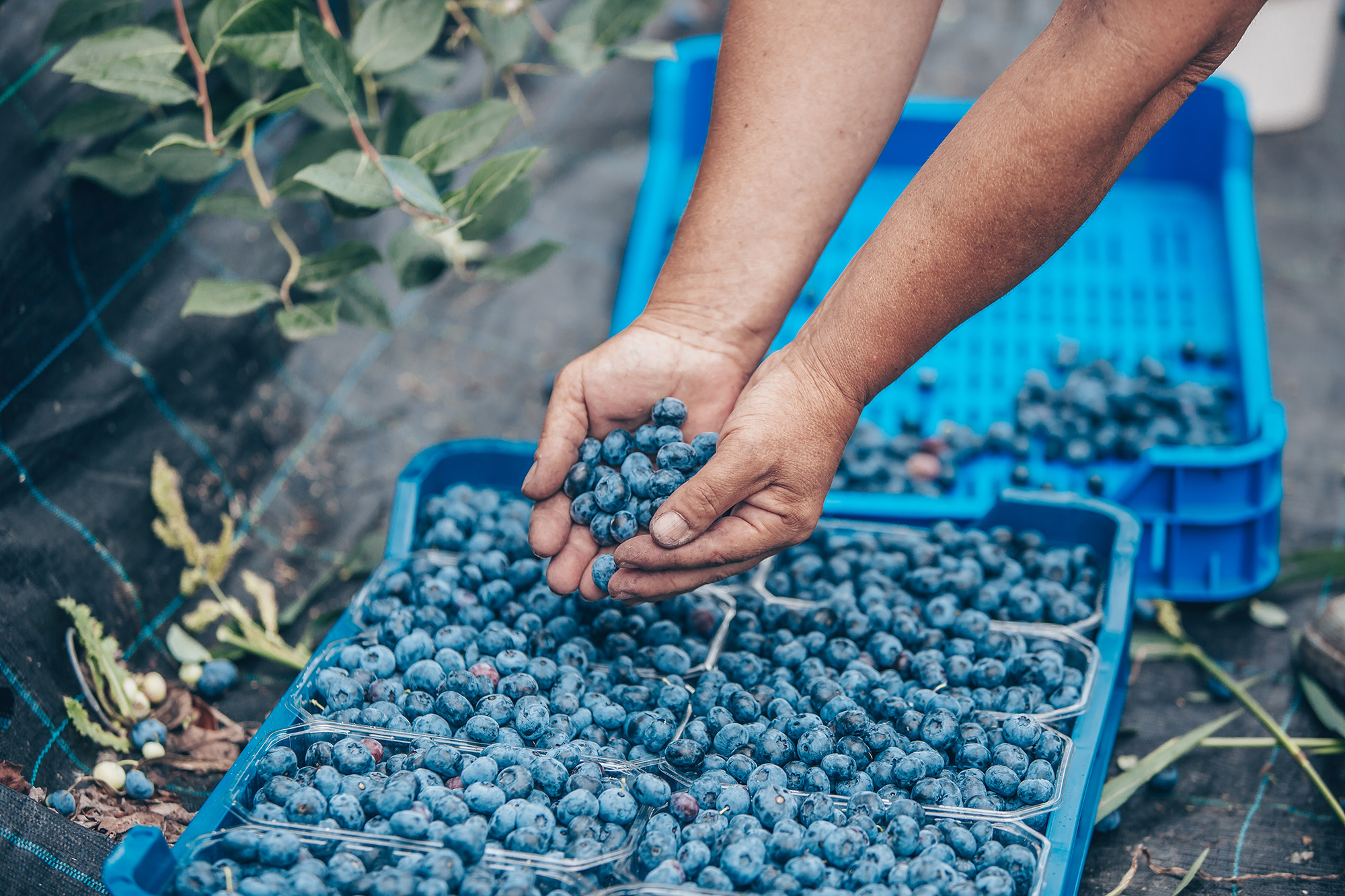Chilean blueberries could face challenges in U.S. and Europe this season
Chilean blueberry volumes in the U.S. and European markets are forecasted to be similar to those of last year, but the industry could face some challenges this season, according to industry sources.
The unpredictable timing of the arrivals, more volumes in the markets from other supplying countries, and difficulty in anticipating demand are all adding up to create a complicated season.
“The current market conditions in the U.S. for this time of year are very inconsistent, as increasing production from Mexico and Peru has added more fruit into the market, while holiday retail demand has declined,” Markus Duran, North American Blueberry Operations Manager at CalGiant, told FreshFruitPortal.com.
The export season is off to a delayed start in comparison to last season due to labor shortages on both coasts driven by the Covid-19 pandemic.
“The biggest issue and concern moving into our peak is delays at the ports […] we are seeing three times the amount of days from port to distribution channels,” Duran said.
This is an issue in Europe as well, as “lacking around 25 percent of pickers influences arrivals”, according to Harro van Dam from CarSol Europe. The market is expecting its first arrivals this week.
According to the Chilean Blueberry Committee, as of week 50, Chile has shipped a little over 26,000 metric tons (MT), which remains six percent below the previous season in the same week.
Though exports are down, production is going well in Chile and Brian Bocock, Vice President of Product Management at Naturipe said the company expects peak arrivals to start in late January through February.
“We expect the market to be tight with fruit at the beginning of January but things should change when we see the peak arrivals from Chile start to come at the end of the month,” he said.
There is an expected volume of good quality blueberries from Central Mexico to arrive, beginning in January, which will find a home easily and compete with Chile’s supply, according to Cort Brazelton, co-CEO of Fall Creek Farm & Nursery, Inc.
Walter Yager from Alpine Fresh said: “Overall there will be more supplies out of Mexico and that will put pressure on Chilean pricing.”
Another one of the challenges for marketers during this period is the timing of arrivals, according to Duran. “The number of containers received weekly is irregular,” he said.
“Volumes from South America have arrived in waves creating some inventory challenges; either having large amounts arrive all at once or not having a consistent supply to offer.”
Large amounts of fruit from Peru and earlier crops from Morocorro are also affecting the European market, resulting in this year’s gap being smaller for Chilean blueberries.
“We think there will be a split in the market and there will be companies looking for good quality fruit and will switch to Chile right away, being willing and able to pay higher prices for the fruit,” van Dam said.
“There will also be a market looking for lower prices and they will continue as long as possible with Peru.”
There will be a very high peak in the arrivals from Chile in January and the beginning of February, then the volumes will drop very quickly.
In order to stay competitive against origins such as Peru, Mexico and Morocco, Chile has been focusing on developing different varieties. As the blueberry industry transitions from a “supply-driven phase to a quality-driven phase”, the success is having quality blueberries to offer the markets, Brazelton said.
“The challenge for Chile is to put up a similar product in January and February that is on par with the closer, fresher fruit from Morocco, Mexico and Yunan going to Europe, the U.S. and China, respectively,” he said.
Throughout the pandemic, fresh and frozen blueberries have done “spectacularly well”, according to Brazelton.
He said that although the U.S. and Canada are the primary producers of frozen blueberry supply, Chile has a frozen industry and will benefit from the uptick in sales as well.
Blueberries have an undeveloped presence in foodservice and so the damage that the pandemic is doing to that sector doesn’t affect blueberries as much as it has strawberries, FreshFruitPortal.com per se, he said.
“U.S. household penetration of blueberries is 38 percent, while for strawberries it’s almost 80 percent,” Brazelton said.
As the pandemic endures and quarantines continue to disrupt daily life, eCommerce sales are on track to continue increasing in North America and Europe, according to various industry members.
“With health being at everybody’s top priority as of late, we are expecting a slightly above market trend to continue especially with New Year’s resolutions around the corner,” Duran said.
Yager said: “We are hoping that with the new year demand will increase as people focus more on healthy eating, we also hope that the vaccine will encourage people to shop and let demand follow a more normal curve.”
23/12/2020







